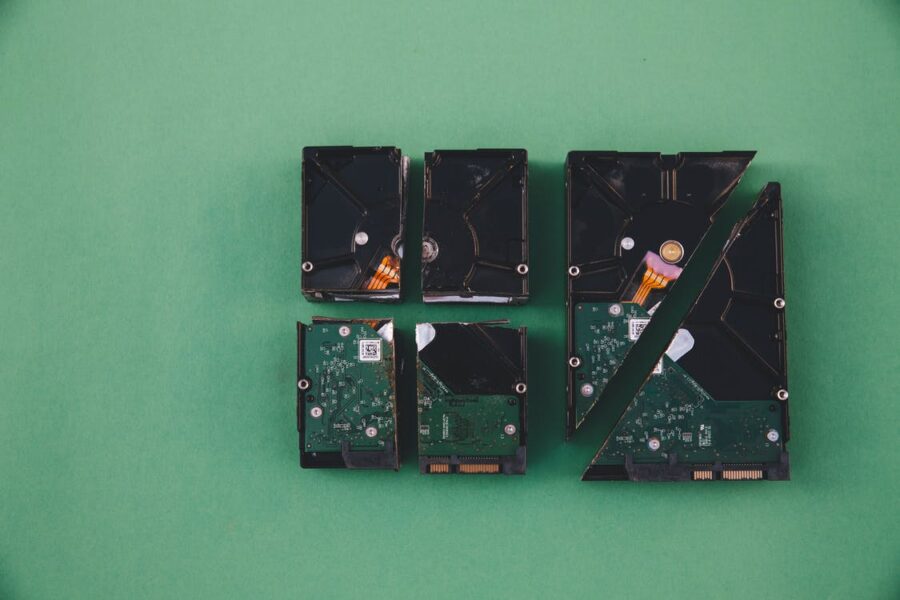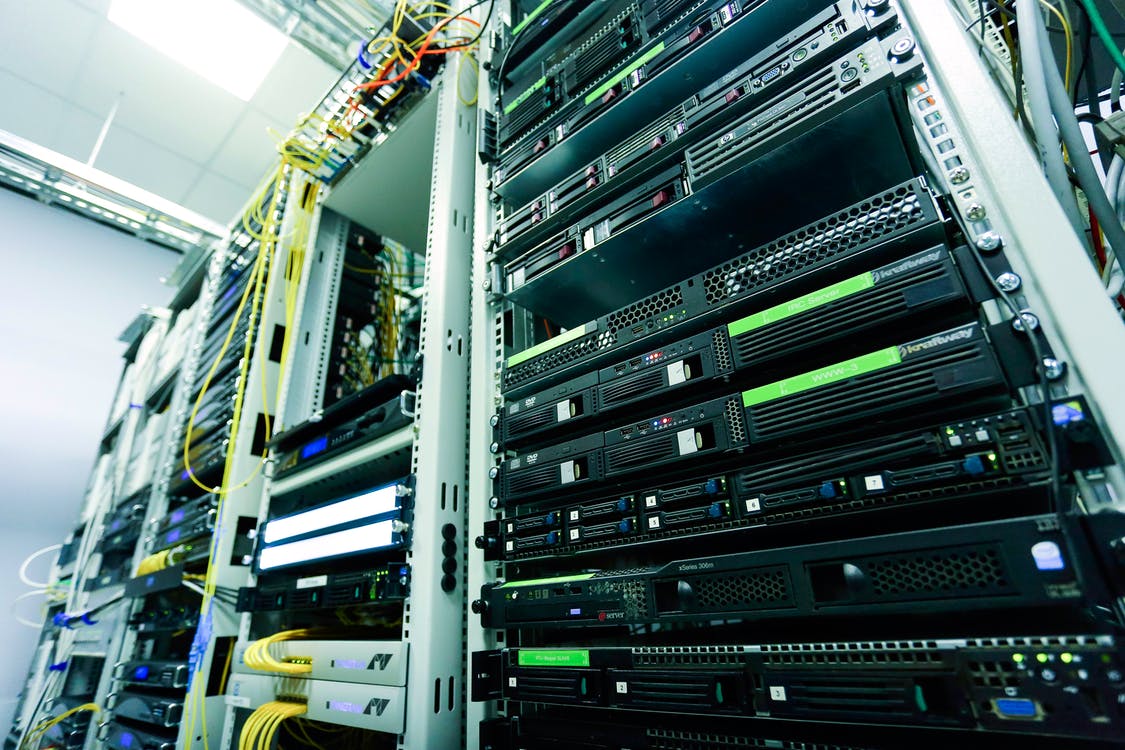RAID (Redundant Array of Independent Disks) storage solutions offer numerous advantages to traditional data storage appliances. One such advantage is safeguarding your files with redundancy. Having your files broken into pieces and spread across the RAID system seemingly provides an effective safeguard from data loss. That said, the Data Savers LLC team sees RAID data recovery cases with enough regularity to confidently say: regular back ups are still a necessity even if your RAID system offers redundancy.

RAID Data Recovery
If you or your organization recently experienced data loss from a RAID system, you should reach out to a professional data recovery lab (like Data Savers) to discuss your options moving forward. RAID storage systems are complex, and RAID data recovery is one of the most complicated scenarios from the perspective of a data recovery engineer. If you truly value the data that was lost from your RAID system, you’ll only work with an experienced organization for RAID data recovery. Fortunately, you won’t need to look very far to find one. Data Savers LLC has nearly twenty years of experience with all manner of data recovery procedures.
Request an Estimate for RAID Data Recovery!

What Causes RAID Systems to Fail?
Some RAID configurations are built for speed. RAID 0 is the fastest configuration, due to the fact that data is only being written once. In every other RAID configuration there is a degree of mirroring and / or parity, where data is replicated and exists in more than one storage location. Knowing some common causes for RAID failure is one of the best ways to prepare as an individual or organization for potential data loss scenarios in your future.
Power Surges and RAID Failure

One of the most common causes of RAID failure is electrical damage stemming from lightning / a power surge. Lightning strikes, tripped circuit breakers, short circuits, and power outages can all contribute to a voltage spike that can be fatal to your electronics.
If you are operating a RAID system during a thunderstorm it may be prudent to power down your storage appliance until the storm passes. Ensuring your RAID appliance has a constant power supply is essential to reducing your chances of RAID failure.
Assembly Errors and RAID Failure

The RAID array reassembles after every reboot. The reassembly process is a vulnerable time for the array. If there is a power surge or voltage drop, it may interrupt the process and cause data loss. Therefore, timing reboots and the subsequent reassembly is vital to preventing data loss.
To avoid data loss and data corruption, make sure you only reboot your RAID system when you have steady and consistent power available.
Drive Issues and RAID Failure

Lets say your organization is operating a Synology DS920+ in a RAID 6 configuration. When you received the Synology equipment, you purchased four identical Seagate hard drives from the local computer supply store. You haven’t had any issues, and the RAID system has been running smoothly for years.
If you are still scratching your head about where you made a “mistake”, think about your hard drive purchase for a minute.
You purchased the same model of hard drive from the same distributor at the same time. It is entirely possible that your hard drives came off the assembly line within minutes or seconds of each other.
After making this purchase, you attach these virtually identical drives to the same machine, where they will encounter a nearly identical workload.
Is it really a stretch of the imagination to consider the prospect that two drives could fail around the same time?
Controller Issues and RAID Failure

The RAID controller manages data distribution and allows the array to function as a single drive. While hardware controllers are more durable and reliable than software controllers, they are significantly more expensive.
Fortunately, the data recovery professionals at Data Savers have years of experience recovering data regardless of your choice of RAID controller.
The Data Savers LLC team will use proprietary technology and years of expertise to construct a virtual RAID controller that can be used to emulate your original configuration.
The variety of RAID configuration levels is partially responsible for the widespread popularity of RAID storage appliances.
Different businesses have wildly different needs, budgets, and levels of technological skill. Each level of RAID offers a unique combination of performance capability, data storage capacity, redundancy characteristics, and even the minimum and maximum number of hard drives the RAID system is capable of utilizing.
RAID Levels Explained

RAID 0
RAID 0 is the most basic level of data storage. This level allows for the striping of data across multiple drives. This allows for all drives to function together and improves overall performance as you get the full performance of all the drives working in unison. The main drawback with RAID 0 is the absence of redundancy.
This means that when one drive fails you will not be able to access any of the data on the other drives. This level expands storage and improves performance but offers little when it comes to data loss protection. It is absolutely essential to maintain an effective backup regiment if you are operating a RAID 0 storage configuration.
RAID 1
RAID 1 uses mirroring to take all data on one drive and replicate it onto a second drive. In doing so, the data is fully protected with a 1:1 copy. This increases overall read performance as there are two identical sets of data that both drives are capable of reading from simultaneously. However, the write performance is negatively impacted as the RAID system will be replicating every block of data that enters the device.
RAID 5
RAID 5 uses the striping concept we discussed along with RAID 0 and an alternative means of achieving data redundancy with the concept of parity. Parity involves using an algorithm to run data across the same block on separate disks to mathematically produce a new block.
This allows the RAID controller to recover the data back piece by piece across the blocks. The spread of the information allows the array to continue to function even if a disk fails. RAID 5 provides additional protection from data loss with its use of parity.
RAID 6
RAID 6 uses the same parity method as RAID 5. The main difference with level 6 is its use of two separate parity calculations. This allows for continued function and recovery in the event of two disks failing simultaneously. For this level to function, the array requires two sets of drives for data and another two drives for parity information. While it does offer protection against multiple disks crashing, the additional total disks significantly increases the likelihood of disk failure. RAID 6 offers high-capacity storage, effective redundancy and respectable performance.
RAID 10
RAID 10 incorporates the mirroring of RAID 1 and the striping of RAID 0. This enables RAID 10 to take advantage of improvements in read performance from RAID 1 and the improved write speed from RAID 0.
RAID 10 is generally considered the best combination of high performance, high reliability, and high capacity storage. That said, RAID 10 is expensive to implement and requires 4 separate drives at minimum.
RAID Data Recovery Services
There are a wide variety of RAID configurations, and countless devices that are capable of implementing RAID technology. Network attached storage (NAS), storage area networks (SAN), just a bunch of disks (JBOD), and virtually any enterprise grade server appliance are all technically capable of supporting a RAID configuration.
RAID Disaster Recovery
Losing data is stressful. It’s easy to start considering worst case scenarios if you suffer a RAID failure. Don’t waste time visualizing a suboptimal outcome. Instead of worrying about how your business can survive without your RAID system, you should be exploring what RAID data recovery looks like.
In a perfect world, preventing data loss is an ideal solution. However, in the (imperfect) world we actually live in, it can be helpful to know what data recovery options are available in your specific situation.
NAS Data Recovery
NAS (network-attached storage) appliances are a popular solution for individuals and businesses to store a large amount of data in a collaborative cloud environment. The Data Savers LLC team has years of experience with NAS data recovery. The Synology DS920+ we mentioned earlier is one of the most popular network attached storage appliances on the market. It is worthy of note that RAID and NAS are mutually exclusive concepts, not all RAID systems are NAS and not all NAS is a RAID.
SAN Data Recovery
The SAN (storage area network) is a high-speed, specialized network for providing privileged individuals with varying degrees of access to storage devices shared by the entire network. SAN and NAS are somewhat similar, but storage area networks are often used by organizations with the highest data storage requirements. SAN systems can have dozens of drives operating any RAID configuration. SAN is similar to NAS in that not every SAN is a RAID and not every RAID is a SAN.
Server Data Recovery
A server is simply a computer connected to a network that provides functionality to other hosts and / or clients on the network. The client-server model is a widely researched framework that seeks to explain how individuals and the myriad of network capable devices will interact on the internet.
Many businesses that maintain an online presence with a website or app operate servers that are essential to the continued operation of their business. Entire companies suffer if the website or app goes offline or starts malfunctioning in any meaningful way. Server data recovery is the process of recovering and restoring data on a server that has been deleted, corrupted, or otherwise made inaccessible. Data Savers LLC has experience with server data recovery for RAID appliances as well as non-RAID servers.
